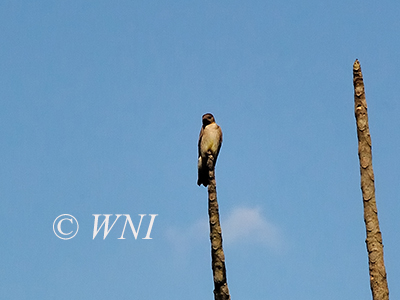| Swallows and Martins (Hirundinidae) |
The Hirundinidae encompass 2 subfamilies, 12-21 genera, and 89-90 species. They are nearly cosmopolitan, with vagrants reported from some sub-Antarctic islands; most diverse in Africa. Swallows and martins occur in a variety of habitats, from semi-deserts to forests, often near water; sea level to alpine zone. Many species readily colonize human-altered landscapes, and likely expanded their ranges in historic times. Species nesting in temperate areas are long-distance migrants. Small to medium-sized birds (10-25 cm in length) adapted to aerial feeding. The bills are short, with a wide gape; the wings are long and pointed; the tail is forked or squared; the legs are short. The upperparts are glossy dark blue or green, or light brown; the underparts are white or rufous. Swallows and martins nest in burrows, cavities, or build mud nests in locations protected from the elements, e.g., under cliff ledges, in caves, and man-made structures; some readily accept nest boxes. Many species are colonial. The clutch contains 2-5 eggs. Incubation lasts 10-21 days, and the young fledge after 20-21 days. Swallows and martins are aerial insectivorous.
 |
Southern Rough-winged Swallow (Stelgidopteryx ruficollis) |
|
| Unauthorized use of our images is NOT permitted. | ||
| Hotlinking or "pinning" of our images to websites is STRICTLY PROHIBITED. | ||
| Copyright © Michael Patrikeev - All Rights Reserved | ||
| |
||





